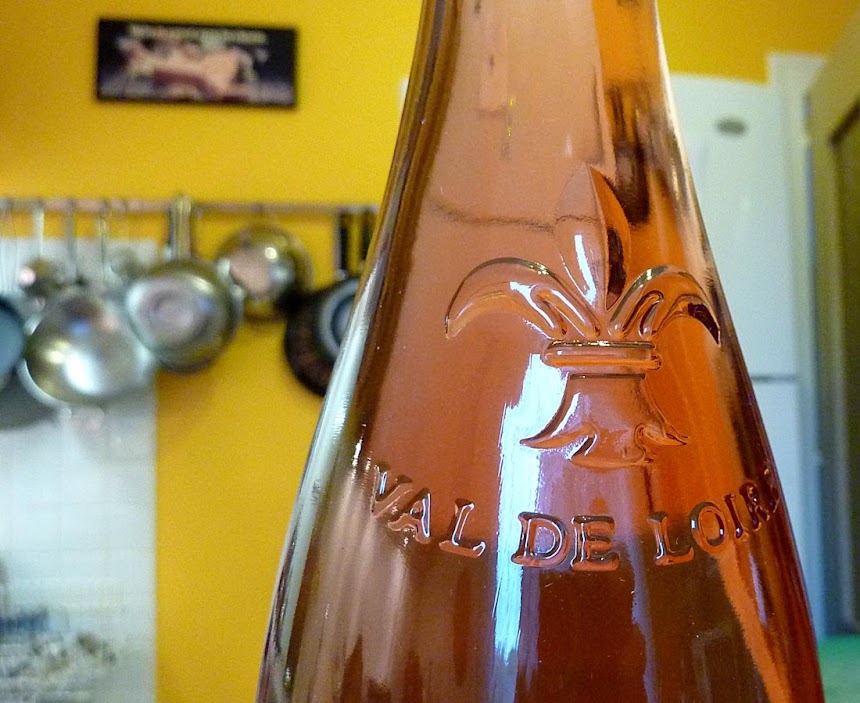I'd heard of Touraine-Amboise, but not so much of Limeray. Amboise is of course one of the most popular tourist destinations in this part of the Loire Valley. Actually, it was where Walt and I thought we might like to live when we decided to study the possibility of relocating to the area more than 10 years ago. For budget reasons and because we found a house we liked here, we ended up in Saint-Aignan, 20 miles southeast. No regrets.
Some of my wine books describe the local denominations as Touraine and Touraine-Villages, just as in Beaujolais some of the vineyards have earned the name Beaujolais-Villages because the wines they produce are distinctive and of high quality. The « Touraine-Villages » are Azay-le-Rideau on the west side of Tours; Amboise on the east side; Mesland just west of Blois; and now Chenonceau, along the Cher River from Bléré to Saint-Aignan and Meusnes.
One of the actual villages in the Touraine-Amboise AOC area is Limeray, on the north bank of the Loire River across from Amboise and its château, and pretty much half way between Tours and Blois. It's a pretty village backed up against the limestone bluff that defines the boundary between the alluvial plain and the
coteaux or hillsides that rise up on its northern edge.
Here, the vines that give Touraine-Amboise wines are planted above the town, on a flat plateau. Limeray's wineries have cellars or
caves that are carved into the limestone cliffs and hillsides just below the vineyards. The grapes are the expected Loire wine varieties: Gamay, Cabernet Franc, and Côt (or Malbec) for reds and rosés, and Chenin Blanc (known locally as Pineau de la Loire) for whites, which can be dry or sweet as in Vouvray.
Often in the area around Saint-Aignan, we find rosés made from Gamay or Cabernet Franc grapes, or a blend of juices from both. In Touraine-Amboise, we were told, the rosés are made from an assemblage of three grape juices: Gamay, Cabernet Franc, and Côt. In fact, Brigitte Péquin of Domaine des Bessons, who hosted a tasting for us, said that the Touraine-Amboise wines are fundamentally based on Côt (known elsewhere and internationally now as Malbec), not Gamay as in other parts of Touraine.
As in nearby Vouvray, on the north side of the Loire west of Limeray and Amboise, the white wines are made from Chenin Blanc, which can give dry, semi-dry, and sweet dessert wines depending on weather conditions in any given year. In the part of Touraine surrounding Saint-Aignan, the primary white wine grape is Sauvignon Blanc, which gives very dry, grassy-tasting white wines.
In Touraine-Amboise, the special red wine is made from an
assemblage of Côt, Cabernet Franc, and Gamay juices and is called the Cuvée François Ier, after the popular Renaissance-era king. In the Touraine-Chenonceau wine district, that's also a common blend, and it's called Tradition. The Domaine des Bessons in Limeray makes a Prestige red wine using just Côt and Cabernet that is aged briefly in oak barrels, a fairly unusual practice in the area.
At the Domaine des Bessons winery, the wines sell for between five and seven euros per bottle. Right now, the 2010, 2011, and 2012 vintages are featured. We found them all to be very good. Walt and I plan to go back to Limeray this winter to take some more photos and sample and buy some more wines.





















































